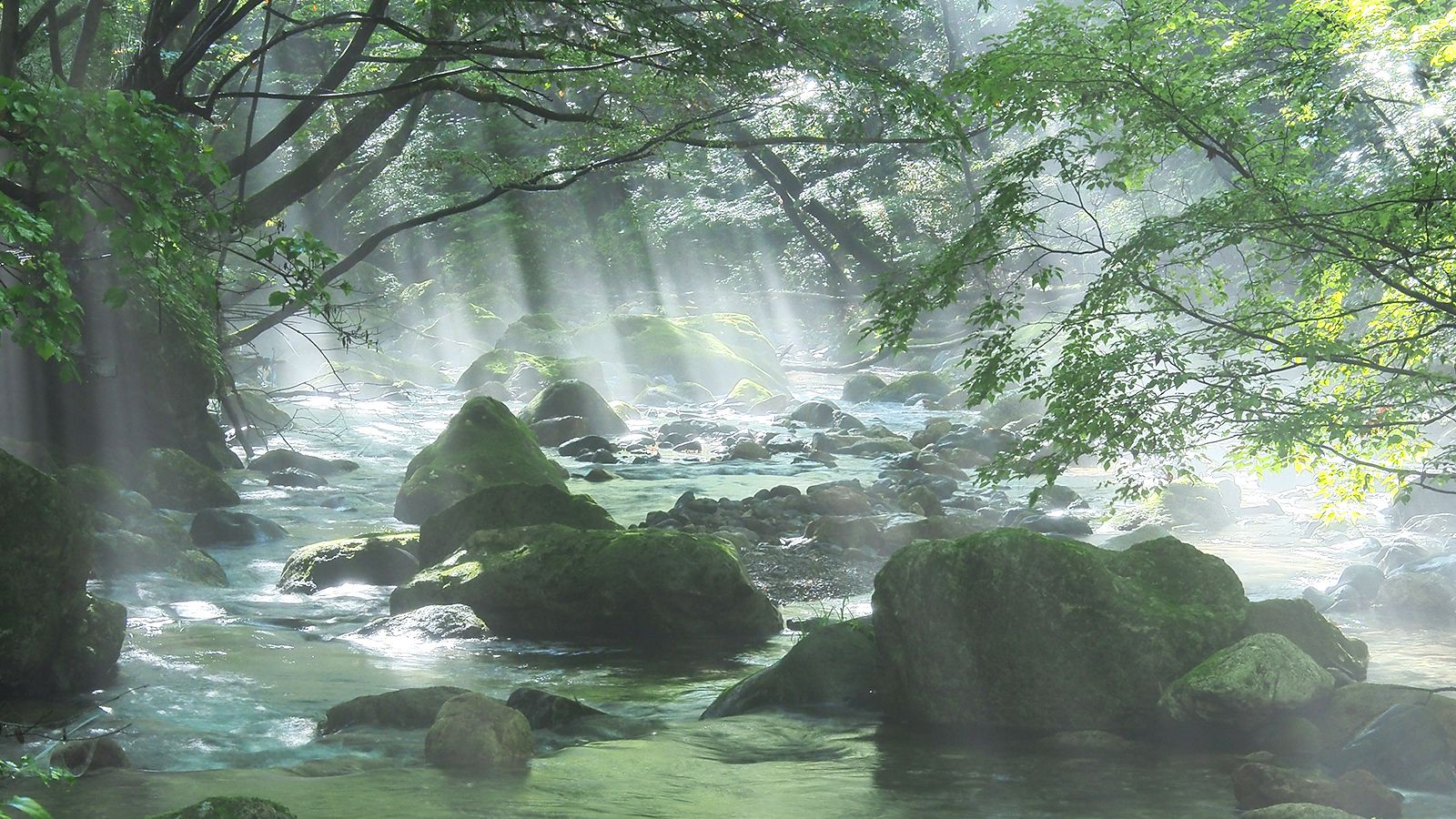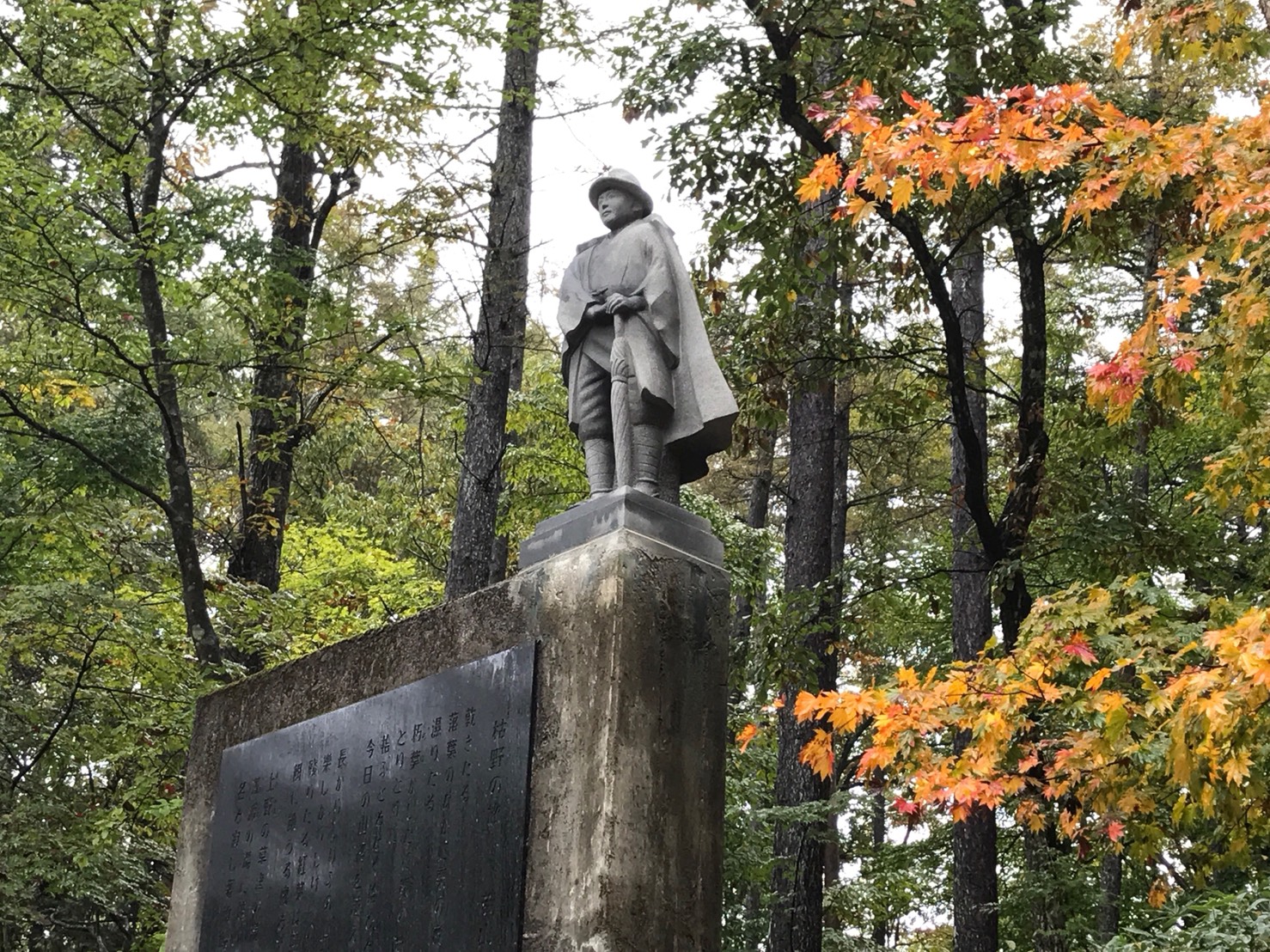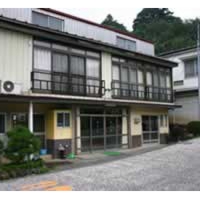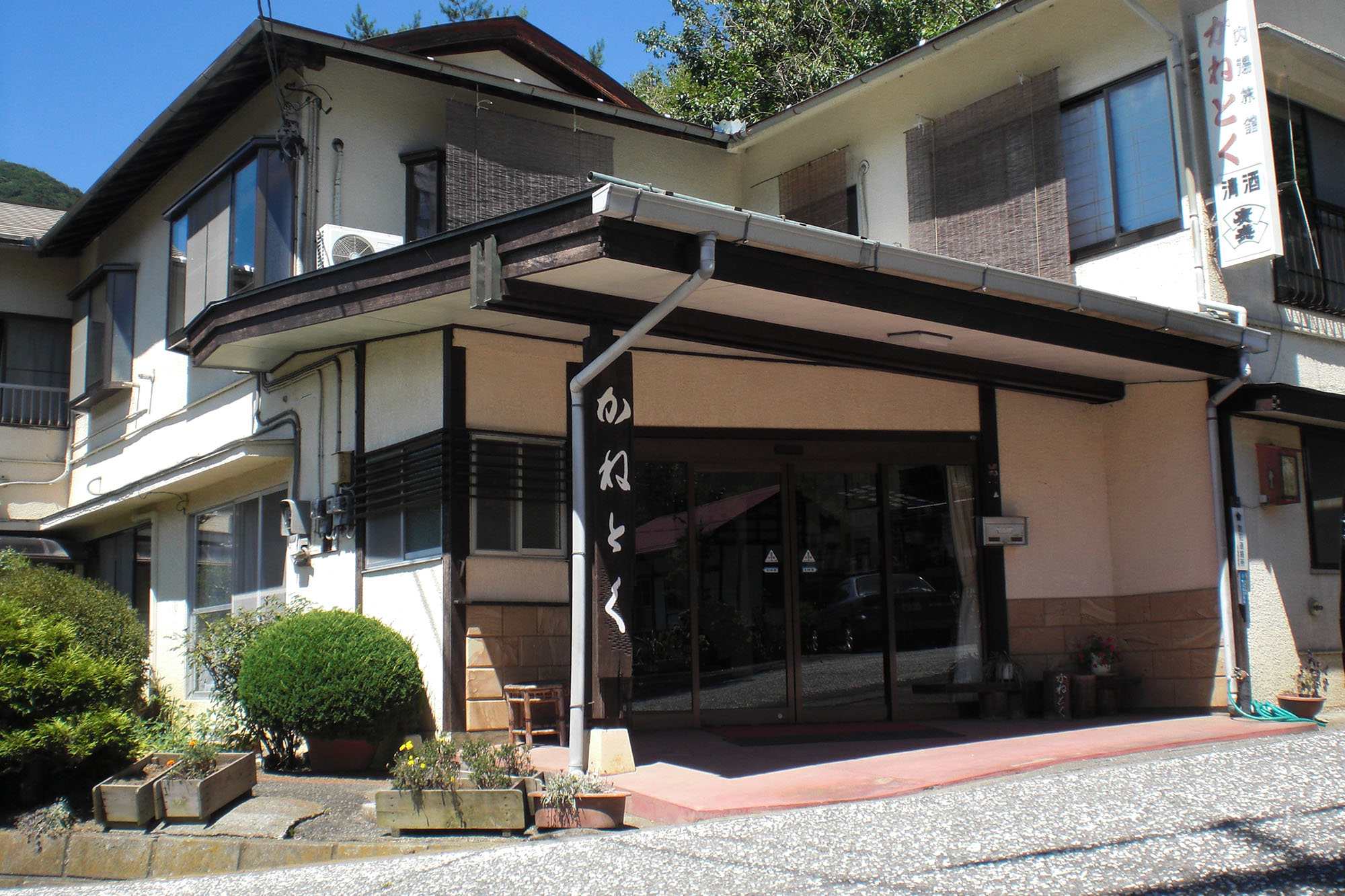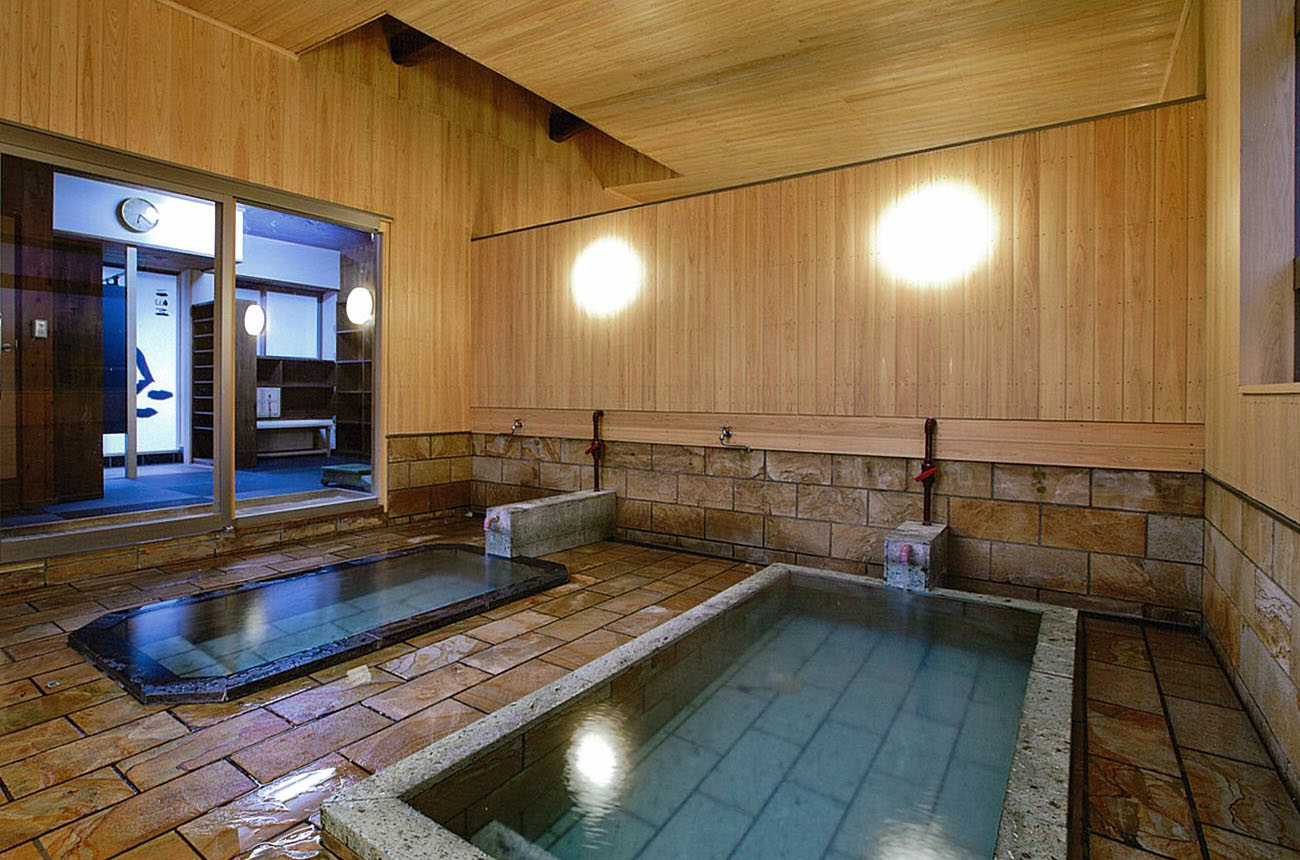SAWATARIHot Spring that warms
and relaxes
Sawatari has been rich in springs since the Jomon period. The land surrounded by rich nature is the best place to live in. It is said that Genji’s historical figures, Yoshinaka Kiso of Genji and Yoritomo Minamoto were refreshed at this hot spring. Since then, it has been loved not only by samurai but also by writers and artists such as Choei Takano (Western-science scholar), Sotei Fukuda (doctor) and Bokusui Wakayama (writer and poet). However, at the peak of 1945, the hot spring town was devastated due to a great fire. In 1959, Sawatari hot spring were revived as “hot springs that make your skin beautiful” and continue to protect soft hot springs and rich nature. The origin of Sawatari’s very soft hot springs comes from its long history.SAWATARI

ONSEN
Hidden Treasure Fresh natural spring water since the Jomon period
Since the Jomon period (around 1000 BC), Sawatari has had hot springs.It is a land surrounded by nature and a place where people can live easily.The rich history of Kiso no Yoshinaka and Yoritomo Genji has healed their fatigue in Sawatari.Sawatari is a land loved by great people such as Choei Takano, physician Sotei Fukuda, writer Bokusui Wakayama, and more.
Benefits of Sawatari Onsen
Sawatari was established as a (hot spring/spa?) 800 years ago. Half a century of rainwater penetrates deep underground and absorbs minerals for over 40 years. The resulting spring water erupts above 55ºC at the water source.

CUISINE
Kibi daifuku
Kibi Daifuku is a soft, round rice cake stuffed with sweet bean jam. Daifuku is being sell at Nakaya-manju in Sawatari Onsen Town. There are pale yellow grains baked into the cake, which goes well with red bean paste . There are mixed set of Daifuku and Onsen Manju.


ATTRACTION
Must see Historic heritage sites in SawatariManyo Poem Monument
At the Manyo Poem Monument of Sawatari Shrine there’s a poem that, roughly translated as: “I accidentally met a Sawatarian girl, but I was riding my horse so fast that I didn’t have time to express my praise…”
The Commemorative Plaque of Sotei Fukuda
Fukuda Sotei was a doctor in the Edo period. He was born in 1791 (3rd year of Kansai). He studied traditional medicine from Toutei Ninomiya and Dutch medicine from Choei Takano. He established a hospital in Agatsuma-gun, the hometown of Gunma. He and Choei translated a book about surgical technique named “Kesshi Gekasho” written in original Dutch by Guessel. Fukuda protected Choei when he escaped from prison. Fukuda died on November 28 1841 (11th year of Tenpo).
Essential festivalsThe Torioi Festival and Don-Don-Yaki
Mt. Tenjin overlooks Sawatari Town. The festival god called Okuninushi is the first of 22 pillars on the mountain. At the end of the Meiji period, they were erected to worship the gods of the Kamisawatari area. There is a monument called Manyokahi near the temple. It was built by Fukuda Rokuemon at the end of the Edo period (1603-1868).

EXPERIENCES
Tea tasting at Shirakubo
To celebrate the night festival, A tea tasting ceremony called Ochako is held every February 24th at Shirakubo Tenman Shrine. This is a unique event where participants have to drink one of four types of tea and guess which tea it is by the taste. This event is held by the Ochako Preservation Society. You can participate from 15 to 40 people. The event fee is 30,000 yen. For more information, please contact Machida of the Ochano Preservation Society (0279-66-1922). Or contact Nakanojo Museum at (0279-75-1922).

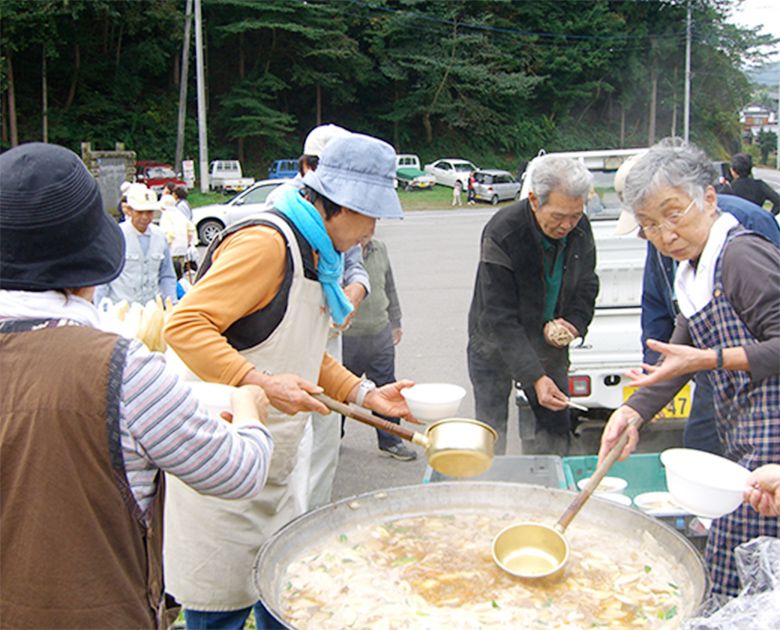
EVENTS
Bokusui Festival
This annual event is held on October 20th. The poet Bokusui Wakayama wrote “Kareha no Uta” at the Kuresaka Pass when he passed through Sawatari on his way from Kusatsu on this day in the Taisho period. Participants commemorated this day, and the Society for Preservation erected a monument inscribed with Bokusui’s poem. At the time of the festival, the Kuresaka Pass is colored with red leaves of larches and broad-leaf trees.There is a service that provides tourists with bowls of nameko (butterscotch mushroom) miso soup.
Imonikai
This annual event takes place in mid-October. The senior club of Arikasa is the heart of the event. They plant the taro seed in spring. They use freshly duged taro before the festival. In order to feed about 300 participants, 30kg village taro is boiled. And it is a great opportunity for tourists to interact with locals.
SAWATARI RECOMMEND
SPOT
SAWATARI JAPANESE STYLE
HOTEL
SAWATARI
ONSEN
WHERE IS
NAKANOJO?
The town of Nakanojo is located in the northwestern part of Gunma Prefecture (群馬県). It is accessible from Tokyo in about 2 hours. Enjoy the beautiful nature of Japan away from the city.

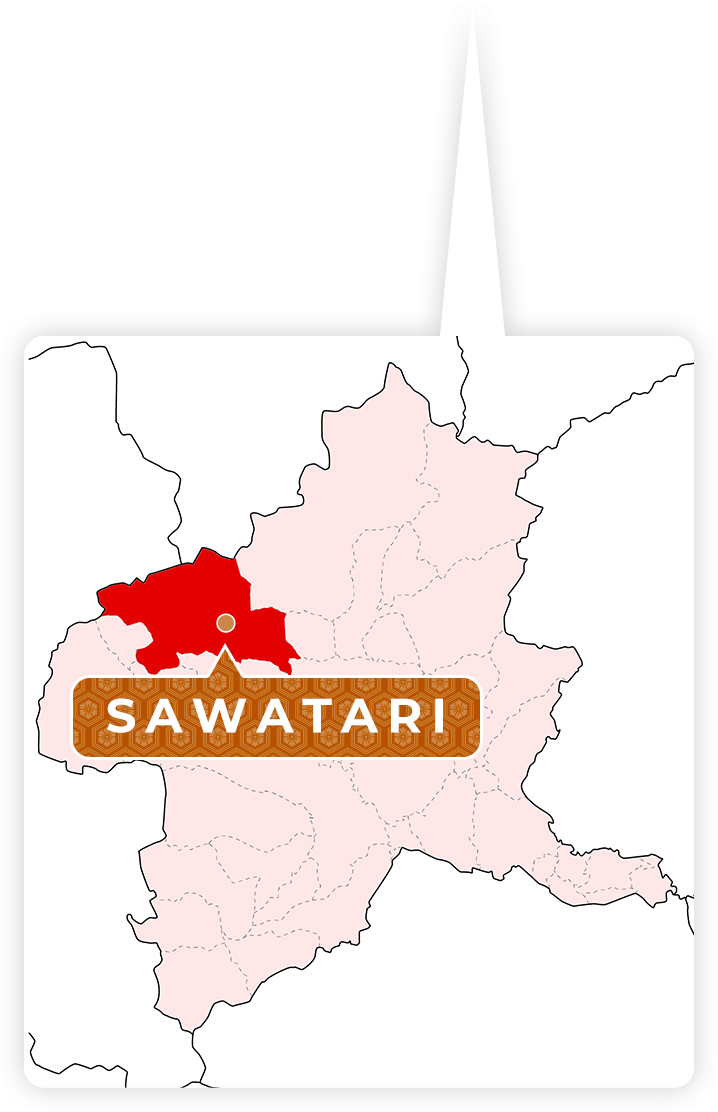
NAKANOJO - MACHIACEESS
BY TRAIN
- Haneda Airport
- 13-20min
Keikyu Line
Platform No.2 - Shinagawa
Sta. - 6min
JR Yamanote Line
Platform No.1 - ▼
- 13-20min
- 19min
Tokyo Monorail
Platform No.2 - Hamamatsucho
Sta. - 11min
JR Yamanote Line
Platform No.2 - ▼
- 19min
- Tokyo Sta.
- 53min
JR Shinkansen
Hakutaka - Takasaki Sta.
- 55min
Agatsuma Line
Platform No.2 - ▼
- 20min
Kanetsu Kotsu
Bus To Sawatari Onsen
- ▼
- 20min
- 25min
Taxi
Senpaku Kanko
(TEL:0279 - 75 - 2321) - ▼
- 25min
BY HIGHWAY BUS
- Haneda Airport
- 30-45min
Bus Terminal
Platform No.1/No.3 - Tokyo Sta.
Yaseu Street - 200min
Shima Onsen
Bus - ▼
- 20min
Kanetsu Kotsu
Bus To Sawatari Onsen
- ▼
- 20min
- 25min
Taxi
Senpaku Kanko
(TEL:0279 - 75 - 2321) - ▼
- 25min
BY TRAIN
- Shinjuku Sta.
- 110min
Shonanshinjuku Line
Platform No.2 - Takasaki Sta.
- 55min
Agatsuma Line
Platform No.2 - ▼
- 20min
Kanetsu Kotsu
Bus To Sawatari Onsen
- ▼
- 20min
- 25min
Taxi
Senpaku Kanko
(TEL:0279 - 75 - 2321) - ▼
- 25min
BY HIGHWAY BUS
- Shinjuku Expressway
Bus Terminal - 186min
Joshu Yumeguri
Platform No.7 - ▼
- Shinjuku Expressway
- 20min
Kanetsu Kotsu
Bus To Sawatari Onsen
- ▼
- 20min
- 25min
Taxi
Senpaku Kanko
(TEL:0279 - 75 - 2321) - ▼
- 25min
BY TRAIN
- Tokyo Sta.
- 53min
JR Shinkansen
Hakutaka - Takasaki Sta.
- 55min
Agatsuma Line
Platform No.2 - ▼
- 20min
Kanetsu Kotsu
Bus To Sawatari Onsen
- ▼
- 20min
- 25min
Taxi
Senpaku Kanko
(TEL:0279 - 75 - 2321) - ▼
- 25min
BY HIGHWAY BUS
- Tokyo Sta.
Yaseu Street - 200min
Shima Onsen
Bus - ▼
- Tokyo Sta.
- 20min
Kanetsu Kotsu
Bus To Sawatari Onsen
- ▼
- 20min
- 25min
Taxi
Senpaku Kanko
(TEL:0279 - 75 - 2321) - ▼
- 25min
NAKANOJO AREA
